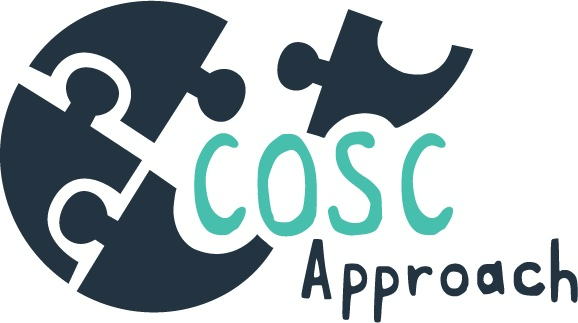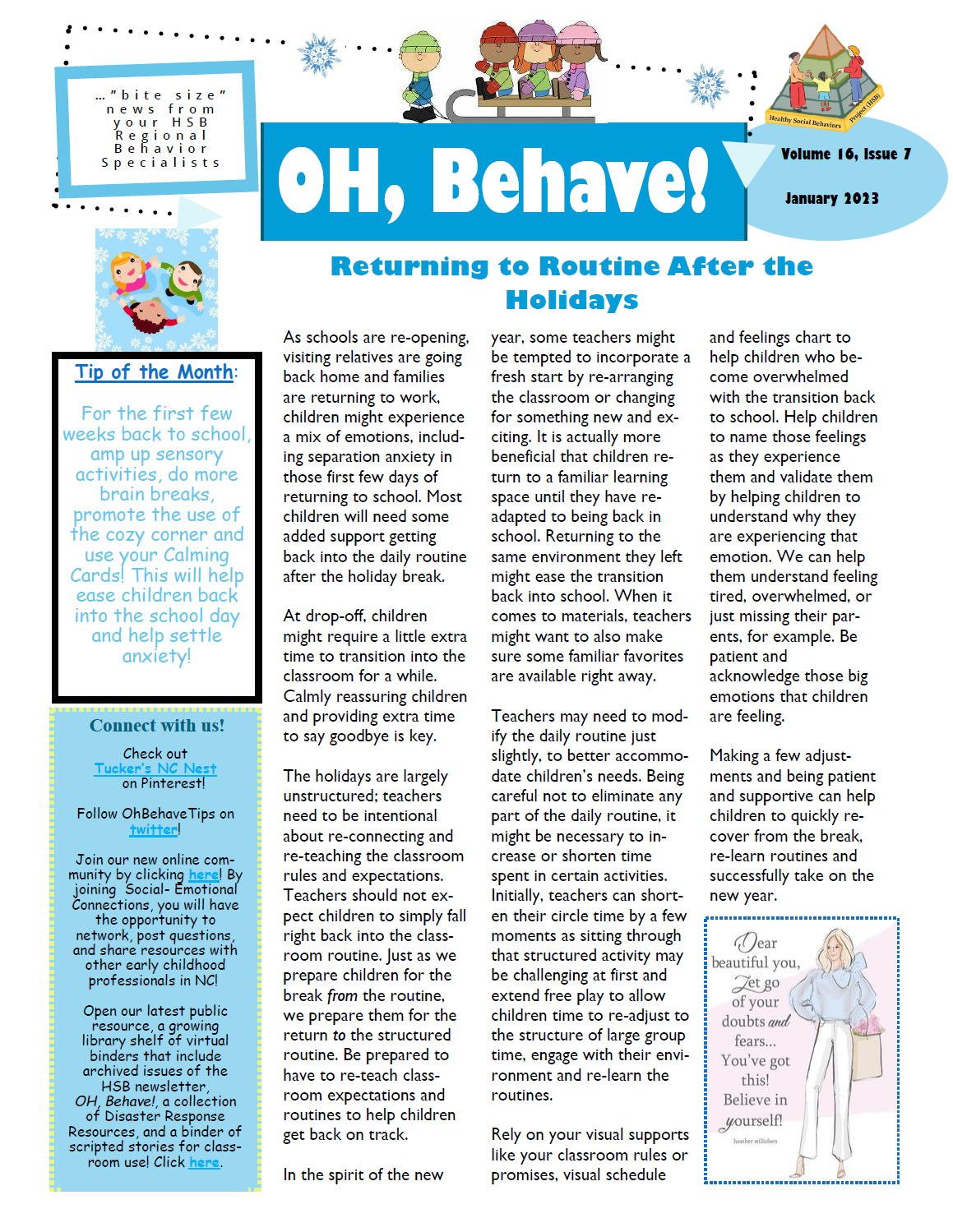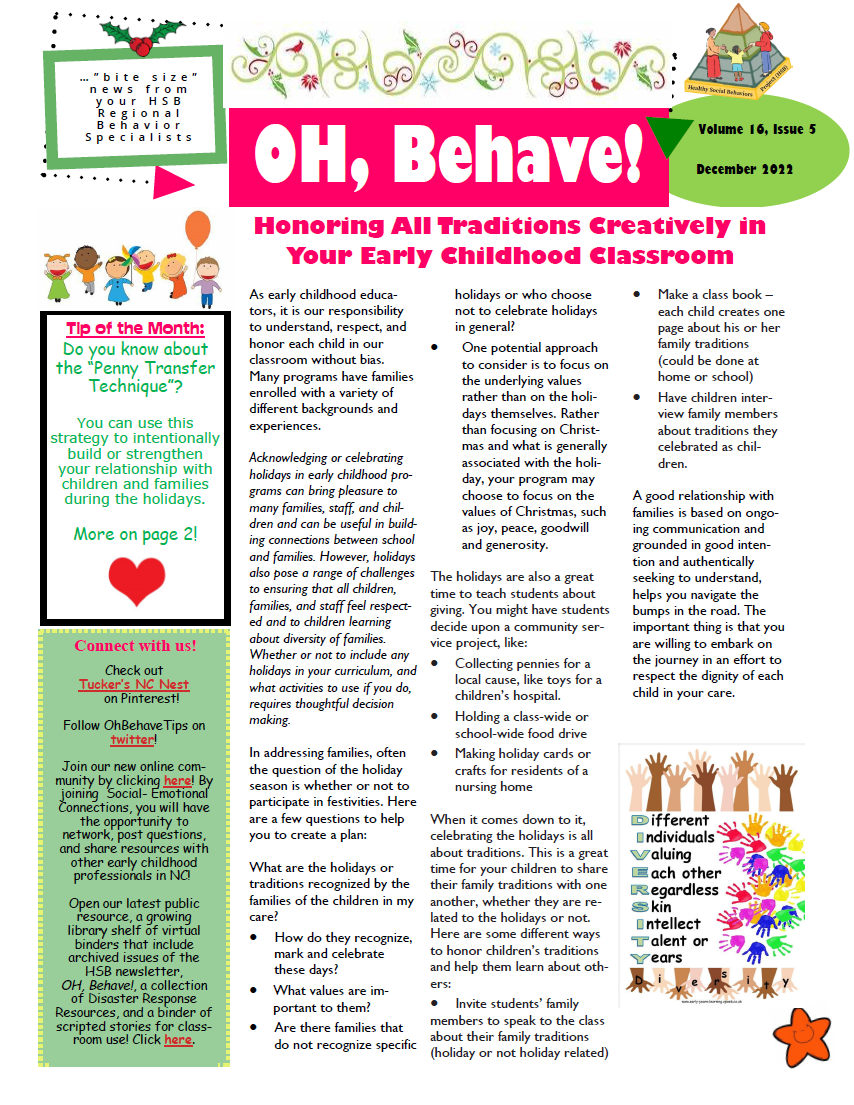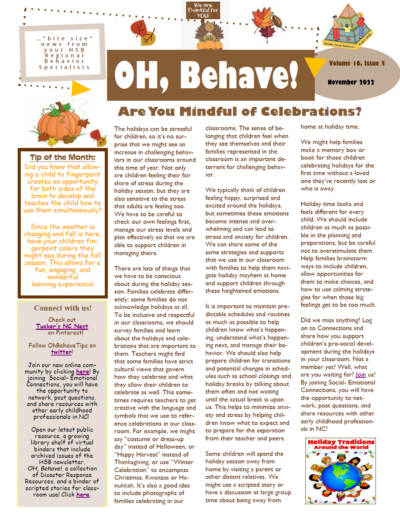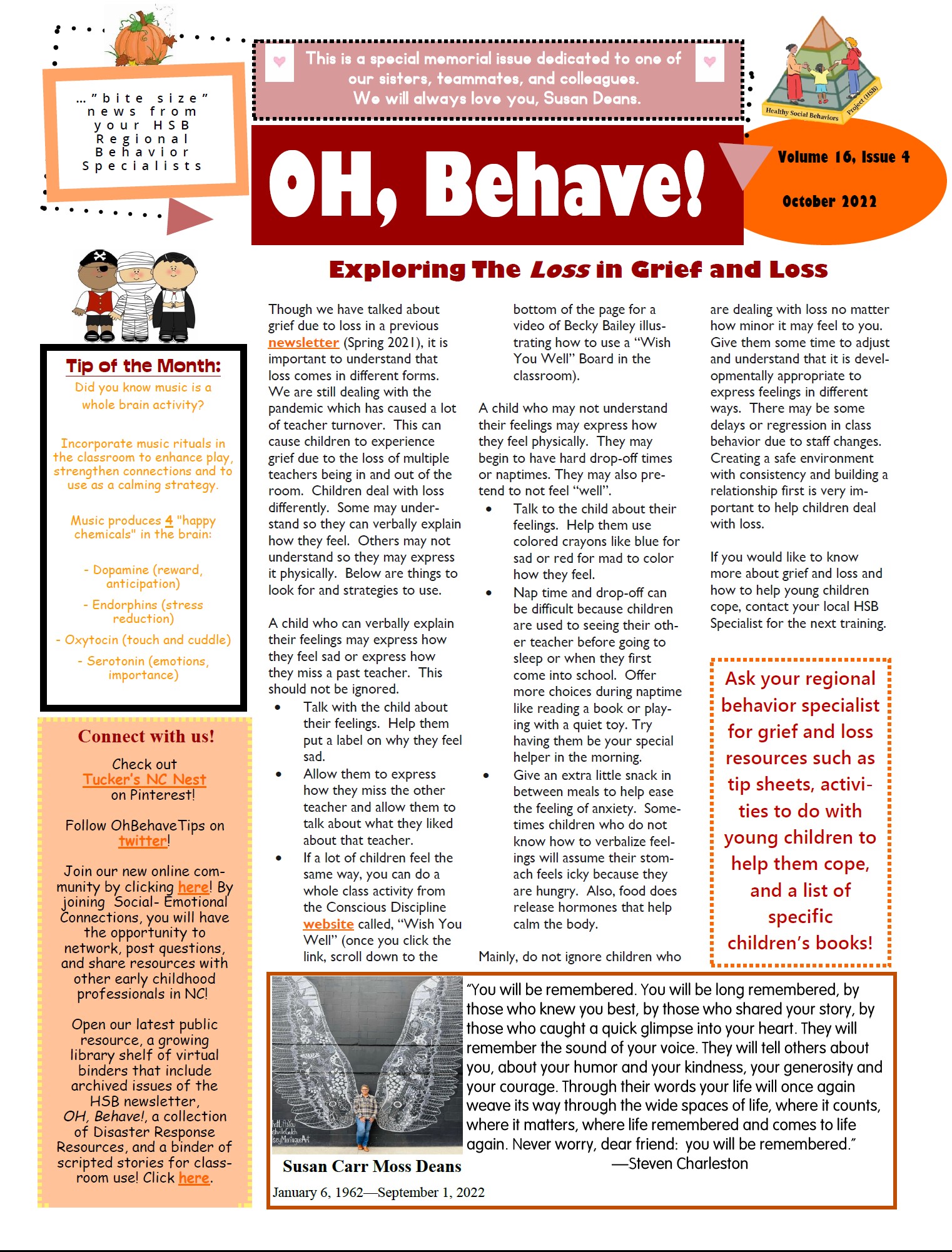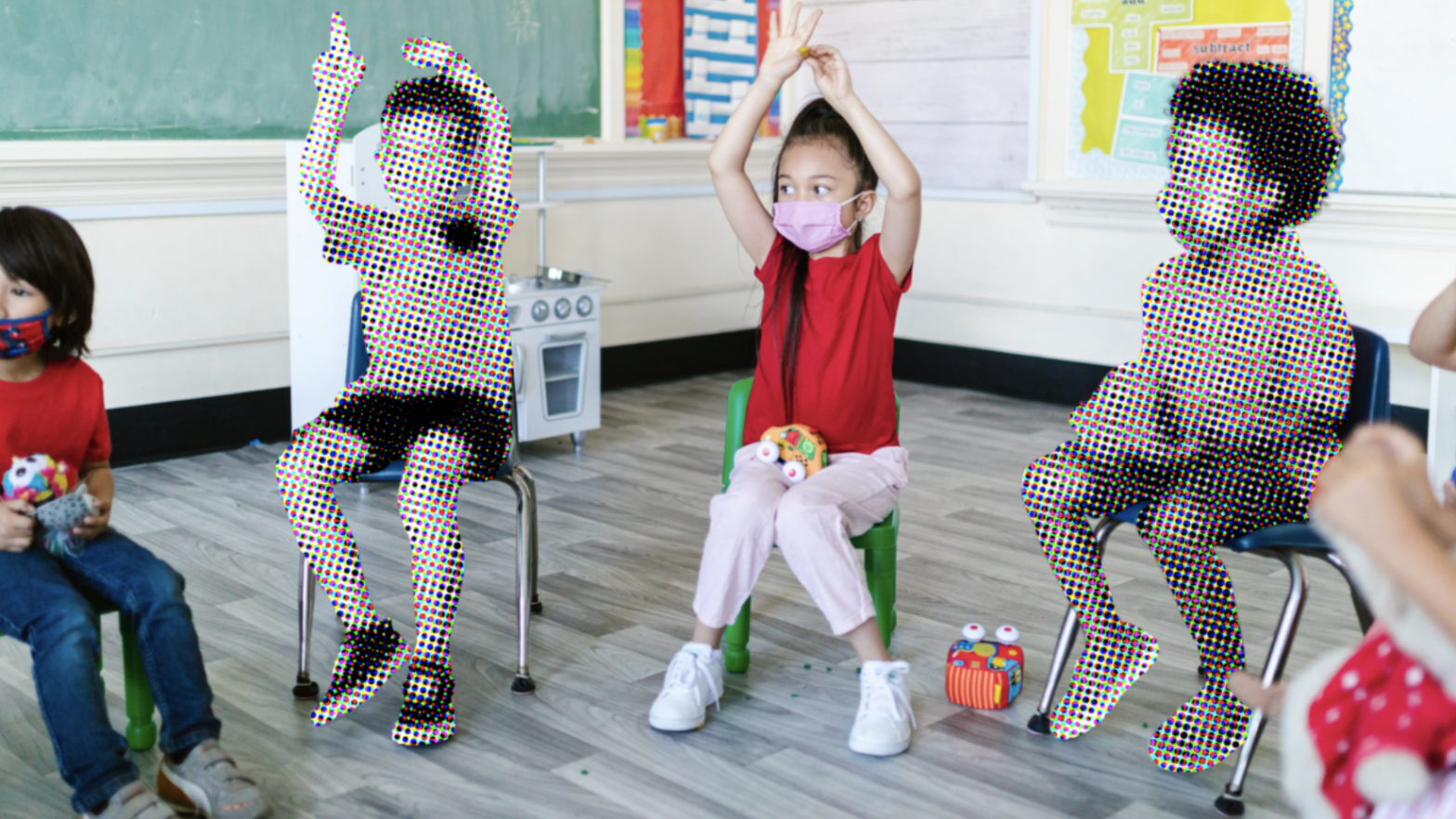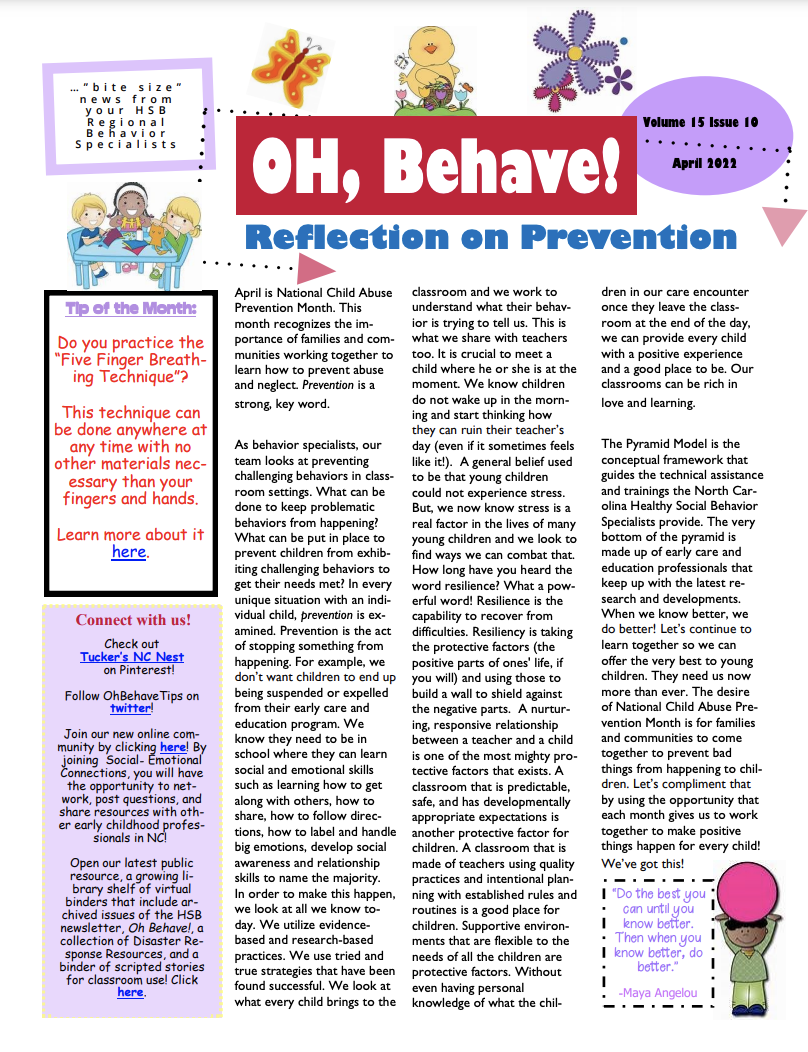The Circle of Security Classroom Approach (COSC) is an eight-chapter professional development series designed to help promote an understanding of attachment theory and offer support to classroom teachers.
Topic: Social-Emotional
Oh Behave! That Big, BIG Energy: Boys AND Girls
Oh Behave! Returning to Routine After the Holidays
B-3QI Quarterly Newsletter – January 2023
The NC Birth-to-Three Quality Initiative (B-3QI) is pleased to share our quarterly newsletter to provide relevant information to birth-to-three teachers and administrators committed to high-quality care and education.
Oh Behave! Volume 16 Issue 6 December 2022
Oh Behave! Are You Mindful of Celebrations?
The newsletter of the Healthy Social Behaviors Project, Volumn 16, Issue 5 – November 2022.
Healthy Social Behaviors Project Helps Licensed Child Care Centers Reduce Reliance on Suspensions and Expulsions
Since 2005 the Healthy Social Behaviors (HSB) project has been a resource for teachers in North Carolina’s licensed child care centers when they need help managing children who exhibit challenging behaviors.
Oh Behave! HSB Newsletter, October 2022
HSB Project Recognized for Its’ Work in Reducing Expulsions!
“We Know Suspensions and Expulsions are Bad for Preschool Students. What Are Some Alternatives?”
OH, Behave! Newsletter – April 2022
April is National Child Abuse Prevention Month. This month recognizes the importance of families and communities working together to learn how to prevent abuse and neglect. For more, make sure you check out our OH Behave! archived newsletters!
